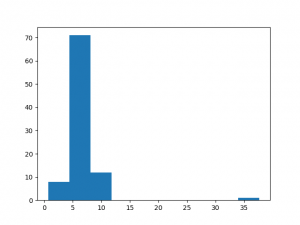This week, I mostly worked on data analysis with real time testing, data collection, and developing models specific for certain letters. Rachel and I worked together on writing the script for recording accuracy for each letter in real time and I used the results we got to make a confusion matrix to pinpoint which letters tend to get more misclassified than others. I have also collected data from my friends.
After the interim demo on Thursday with class TAs, we got some helpful feedback. One of them was to add models for classifying similar letters. Right now, we are using one model to classify all 26 letters. The poses for this group of letters: r,u,v,w, are similar to each other, and the same goes for m,n,s,t,e. Hence we have decided to make two models specifically for this two group of letters so that our glove can distinguish between the similar letters better. I have already developed two models based on the data collected so far, however having more data would be even better to help refine the models, so I’ll be updating the models as we get more data.
Next week, I’ll be working on integrating these news models with our current classification code next week, and analyzing this new method’s performance. As a team, we will also begin to work on our final presentation slides. I would say we are on track with our new schedule. All we have left is to implement our new classification method and get audio to work without lag.



